What is Solar Water Pump - Solar Tubewell
A Solar Tubewell is an application of photovoltaic technology which converts solar energy into electricity to run the pumping system thereby, replacing erratic grid supply and pollution-causing diesel-powered versions. The solar water pump is powered by solar modules that helps draw surface or ground water out for irrigation.
Solar pumps are a revolutionary solution to the age-old problem of providing water to remote locations without access to electricity. In areas where traditional electrical power is not available, electricity cost is high or farmer have no tube well connection, a solar water pump provides a reliable, cost-effective, and environmentally-friendly alternative.
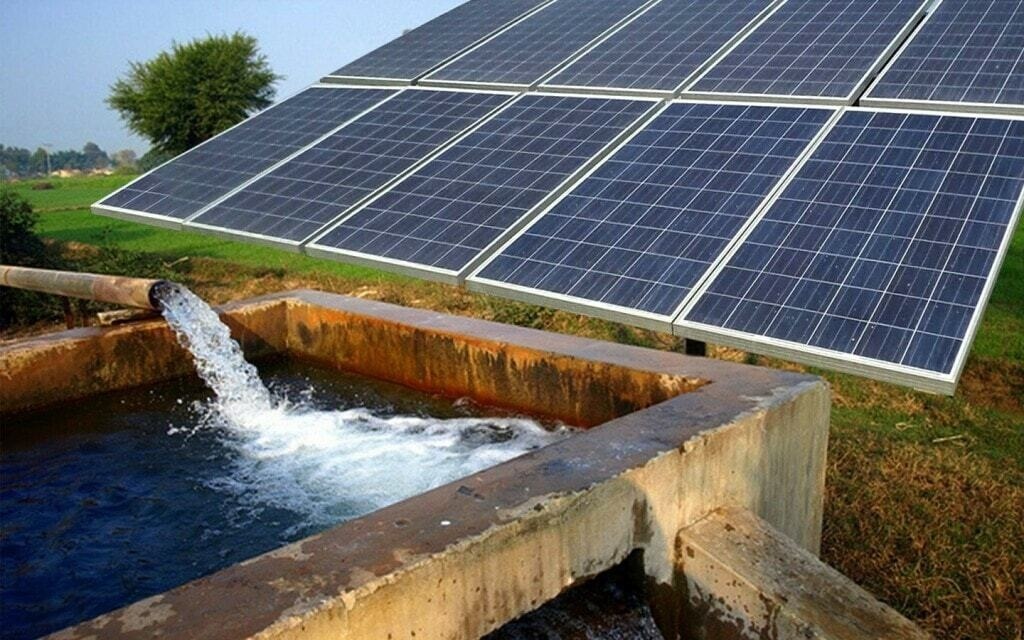
How does a Solar Pump work?
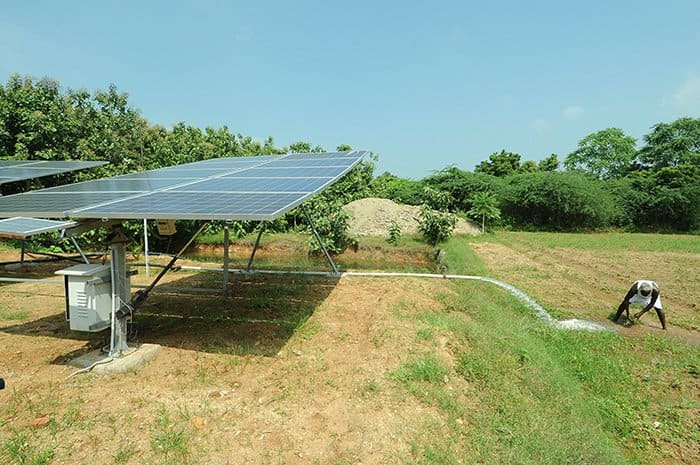
Choosing the Eco Solar System Chandigarh, Solar Tubewell is a compelling decision for several reasons, centered around energy efficiency, environmental responsibility, cost savings, and improved indoor living conditions.
While you may understand what a solar pump is, it is crucial to understand how a solar pump works in order to utilise it effectively. This type of pump works by using solar panels (PV) to convert sunlight into electrical energy, which is then used to power a motor that drives a pump. This pump is capable of lifting water from deep underground or pumping it from a nearby source, such as a lake, bore-well or river.
Components in Solar Water Pump
Solar water pumps are adaptable and may be used to serve various purposes, such as accessing drinking water, crop irrigation, and other domestic purposes. An easy solar pumping system consists of the solar panel itself, the pump or solar motor (submersible/surface pump), and the VFD (Variable Frequency Drive) or Solar Controller to control solar panel power. These devices are adaptable and can be used with a backup generator as well as the electrical grid.
- Solar Pump: A water pump is a mechanical device that is used to transfer water from one location to another. It is commonly used in residential, commercial, and industrial settings to pump water from wells, lakes, rivers, and other sources to buildings, homes, and other structures. The main purpose of a water pump is to increase the pressure of water so that it can be transported to a higher elevation or to a location that is farther away from the water source.
- Solar Panel: The solar panels are the most critical component of a solar water pump as they convert sunlight into electricity. The panels are typically made of photovoltaic cells that convert sunlight into direct current (DC) electricity. The number and size of the panels required for a solar water pump depend on the amount of water needed to be pumped and the amount of sunlight available.Solar panels have become increasingly popular in recent years as a clean and renewable energy source. They are particularly useful in areas with high levels of sunlight, such as deserts and tropical regions. However, they can also be used in less sunny areas, although the energy output will be lower.One of the main benefits of solar panels is that they do not produce any emissions or pollutants, making them a clean and sustainable energy source. They also have a low maintenance cost, as they do not require any fuel or moving parts. This means that once they are installed, they can generate electricity for decades with minimal upkeep.
- Variable Frequency Drive (VFD) or Solar Controller: The control electronics allow for the scheduling of water pumping as well as change in flow rate and supply pressure. They are more than just start and stop switches. Modern controllers have online features that allow users to remotely check on the health and status of the system and any associated apps.A solar water pump controller or VFD is a device that is used to regulate the operation of a solar-powered water pump. It is designed to control the flow of water from the pump and ensure that it is delivered at the correct pressure and flow rate. The controller also helps to protect the pump from damage by monitoring the water level and preventing the pump from running dry.
- Hot Dip Solar Panel Mounting Structure:Solar panels are mounted on heavy hot dip solar panel structure. Our solar installation team use anti-theft nuts for mounting solar panels. Anti-theft nuts increase the security of solar panels from theif. Hot dip structure is rust free and enhances the life of solar system and provide better tensile strength.
What are the Different Types of Solar Water Pumps?
There are numerous types of solar water pumps that can be differentiated on a variety of factors.
Based on Function
Submersible solar pumps are a type of solar-powered pump that is designed to operate underwater. They are often used to pump water from deep underground sources or wells. These pumps are powered by photovoltaic panels, which convert sunlight into electricity that is used to run the motor and pump. Submersible solar water pumps are a popular choice for applications where electricity is not available or where the cost of running traditional pumps is too high.
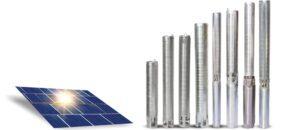
Surface solar pumps are another type of solar-powered pump that is designed to operate on the surface of the water. They are often used to pump water from shallow wells, rivers, or lakes. These pumps are also powered by photovoltaic panels, which convert sunlight into electricity that is used to run the motor and pump. Surface solar pumps are a cost-effective and environmentally friendly alternative to traditional surface pumps that rely on electricity or fuel. They are commonly used in agriculture, domestic water supply, and community water supply applications.
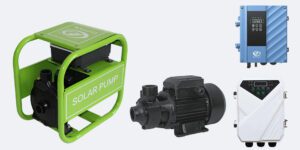
Based on Current
These solar water pumps use alternating current (AC) instead of direct current (DC) to operate. They are commonly used in applications where high flow rates or high-pressure output is required. These pumps are powered by photovoltaic panels, which convert sunlight into electricity that is used to run the motor and pump. AC solar water pumps are often used in agriculture, irrigation, and water supply systems, and are capable of delivering reliable, cost-effective, and environmentally-friendly water pumping solutions.
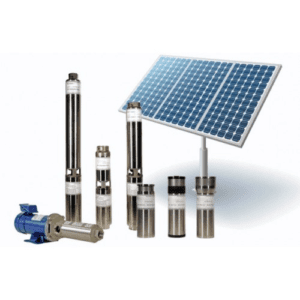
In comparison to AC solar water pumps, DC solar pumps use direct current (DC) to operate. They are commonly used in applications where lower flow rates or lower-pressure output is required. These pumps are powered by photovoltaic panels, which convert sunlight into electricity that is used to run the motor and pump. DC solar pumps are often used in smaller scale applications such as domestic water supply, livestock management, and fountains. They are efficient, reliable, and cost-effective, making them a great option for off-grid water pumping needs.
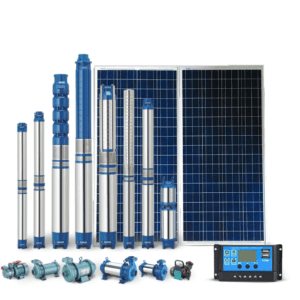
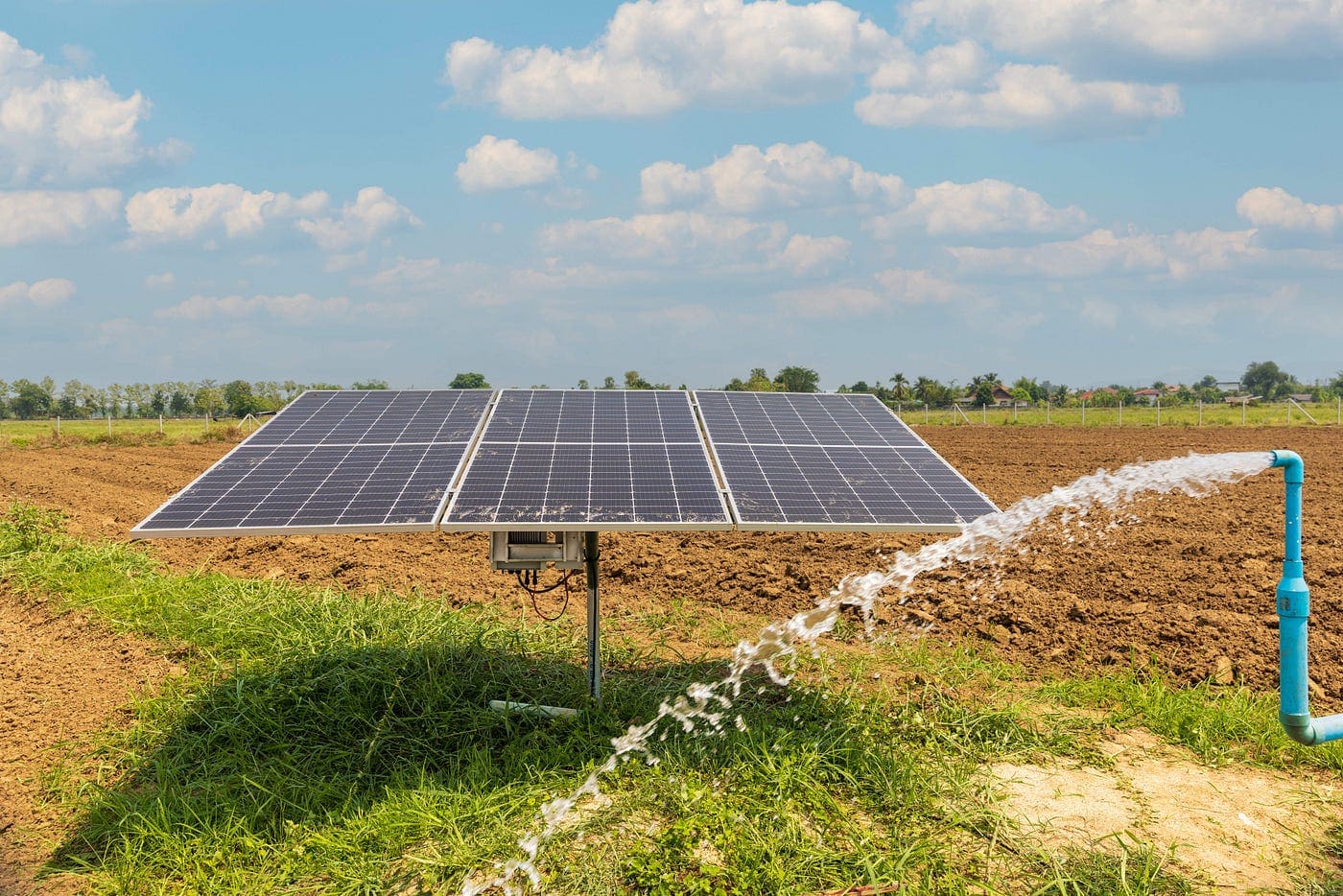
PM-KUSUM Scheme
PM-KUSUM (Pradhan Mantri Kisan Urja Suraksha evam Utthaan Mahabhiyan) Scheme, has been launched by the Ministry of New and Renewable Energy (MNRE) for setting up subsidized solar pumps and distributed solar power plants across the country. It is one of the biggest initiatives in the world to provide clean energy to more than 3.5 million farmers across India.
What is the difference between a solar pump and electric pump?
The main difference between a solar pump and an electric pump is their source of power. An electric pump relies on grid electricity to operate, while a solar pump uses energy from the sun to power its motor and pump. This makes solar pumps more environmentally friendly and cost-effective in off-grid or remote locations.
What is the purpose of a pumping system?
The purpose of a pumping system is to move fluids, such as water or oil, from one location to another. Pumping systems are used in a wide range of applications, including water supply, irrigation, wastewater treatment, and oil and gas production, to name a few.
What is a solar pump controller or Variable Frequency Drive (VFD)?
A solar pump controller is an electronic device that controls and regulates the operation of a solar-powered pump. It manages the flow of electricity from the solar panels to the pump, ensuring that the pump operates efficiently and effectively in different weather and sunlight conditions.
What is the rating of the solar panel used in the solar pump?
The rating of the solar panel used in a solar pump varies depending on the specific pump and its requirements. Typically, solar panels used in solar pumps can have power ratings ranging from 340 watts to 580 watts, depending on the pump’s power needs and the amount of sunlight available in the location where the pump is installed.
What is the subsidy on solar pumps in Punjab?
As of September 2024, farmers in Punjab have been given upto 80% subsidy of solar water pumps under PM-KUSUM scheme.
How can you modify an electric submersible pump with a solar pump?
To modify an electric submersible pump with a solar pump, you can replace the electric motor with a DC motor and connect it to a solar panel array. You may also need to install a solar pump controller or variable frequency drive (VFD) to manage the flow of electricity from the solar panels to the pump.
